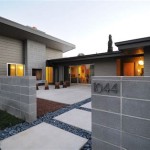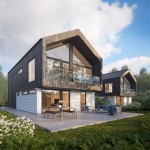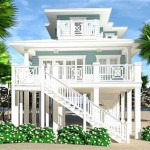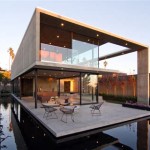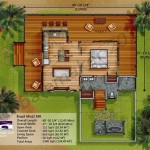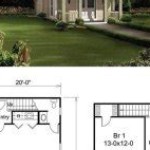Lake Cabin House Plans refer to architectural designs specifically tailored for constructing residences situated near lakeside areas. These plans provide comprehensive blueprints and instructions that guide the construction process, ensuring adherence to proper building codes and regulations while incorporating design elements that enhance the lakeside living experience.
Families and individuals seeking a retreat from the hustle and bustle of urban life often turn to lake cabin house plans when building their dream lakeside getaway. These plans incorporate features that optimize waterfront views and maximize outdoor living space, creating a harmonious connection between the home and its natural surroundings.
In the following sections, we will delve deeper into the key considerations, design features, and benefits of lake cabin house plans, providing valuable insights for those embarking on the journey of building their own lakeside haven.
When embarking on the journey of designing and constructing a lake cabin, careful consideration of various factors is crucial. Here are 9 important points to keep in mind:
- Maximize waterfront views
- Incorporate outdoor living space
- Consider local building codes
- Choose durable materials
- Plan for energy efficiency
- Ensure proper ventilation
- Design for accessibility
- Consider future expansion
- Hire a qualified contractor
By meticulously addressing these points, you can create a lake cabin that not only meets your needs but also provides a haven for relaxation, rejuvenation, and lasting memories.
Maximize waterfront views
Capitalizing on the breathtaking vistas that lakeside living offers is a cornerstone of lake cabin house plans. To fully embrace the panoramic beauty of your surroundings, consider the following strategies:
Expansive windows and glass doors: Floor-to-ceiling windows and wide glass doors seamlessly connect the interior of your cabin with the captivating lake views. These generous openings allow natural light to flood in, creating a bright and airy atmosphere while providing unobstructed sightlines to the water.
Strategic placement of rooms: Intentionally position your living areas, bedrooms, and outdoor decks to face the lake. This thoughtful arrangement ensures that you can enjoy the waterfront views from multiple vantage points, whether you’re relaxing in the living room, dining with family and friends, or simply soaking up the sun on the deck.
Elevated vantage points: Incorporating a loft or second story into your cabin’s design can provide elevated vantage points that offer sweeping panoramas of the lake and its surroundings. Imagine waking up to breathtaking sunrises over the water or stargazing from your loft’s balcony.
Outdoor decks and patios: Extend your living space outdoors with spacious decks and patios that overlook the lake. These areas become natural extensions of your cabin, providing the perfect setting for al fresco dining, entertaining guests, or simply relishing the tranquility of the waterfront.
By implementing these design elements, you can create a lake cabin that truly maximizes waterfront views, making every moment spent in your lakeside retreat a breathtaking experience.
Incorporate outdoor living space
Lake cabin house plans should prioritize the seamless integration of indoor and outdoor living spaces, allowing you to fully embrace the beauty of your lakeside surroundings. Here are four key ways to incorporate outdoor living space into your cabin’s design:
- Expansive decks and patios: Generously sized decks and patios extend your living space outdoors, providing ample room for dining, entertaining, or simply relaxing while enjoying the lake views. Consider incorporating multiple levels of decking to create distinct areas for different activities, such as sunbathing, grilling, or gathering around a fire pit.
- Screened-in porches and sunrooms: Create a comfortable and bug-free outdoor space with screened-in porches or sunrooms. These enclosed areas allow you to enjoy the fresh air and views without the annoyance of insects, making them ideal for spending time outdoors during the evening or on rainy days.
- Lakeside gazebos and : Position a gazebo or strategically on your property to create a shaded retreat by the water’s edge. These structures provide a sheltered spot for reading, napping, or simply taking in the tranquil lake views.
- Outdoor kitchens and fireplaces: Elevate your outdoor living experience with an outdoor kitchen and fireplace. An outdoor kitchen allows you to prepare and cook meals while enjoying the fresh air and views, while a fireplace provides warmth and ambiance on cool evenings.
By incorporating these outdoor living spaces into your lake cabin house plan, you can create a seamless connection between your indoor and outdoor environments, maximizing your enjoyment of the lakeside setting.
Consider local building codes
Before finalizing your lake cabin house plans, it is imperative to thoroughly familiarize yourself with the local building codes and regulations that govern your lakeside property. These codes are established to ensure the safety and structural integrity of buildings within a specific area and may vary depending on the municipality or county in which your cabin will be located.
Adhering to local building codes is not only a legal requirement but also crucial for the safety and longevity of your lake cabin. These codes address various aspects of construction, including:
- Setbacks from the water’s edge: Local building codes often specify minimum setbacks from the water’s edge to protect against erosion, flooding, and other hazards. Failure to comply with these setbacks can result in costly fines or even the denial of a building permit.
- Foundation and structural requirements: Building codes establish specific requirements for the foundation and structural components of your cabin to ensure its stability and resilience against weather conditions and potential ground movement.
- Electrical and plumbing systems: Local codes regulate the installation and safety of electrical and plumbing systems within your cabin, ensuring compliance with industry standards and minimizing the risk of electrical fires or plumbing leaks.
- Fire safety regulations: Building codes include fire safety regulations, such as the installation of smoke detectors, fire extinguishers, and emergency exits, to protect the occupants of your cabin in the event of a fire.
It is highly recommended to consult with local building officials or hire an experienced contractor who is well-versed in the specific building codes applicable to your area. They can provide guidance and ensure that your lake cabin house plans fully comply with all necessary regulations.
By carefully considering local building codes and incorporating them into your house plans, you can ensure the safety and structural integrity of your lake cabin, giving you peace of mind and allowing you to fully enjoy your lakeside retreat for years to come.
Choose durable materials
When selecting materials for your lake cabin, durability should be a top priority. The harsh lakeside environment, with its exposure to moisture, fluctuating temperatures, and potential for insects and pests, demands the use of materials that can withstand these challenges and ensure the longevity of your cabin.
Exterior materials: For the exterior of your cabin, consider materials like fiber cement siding, metal roofing, and composite decking. Fiber cement siding is resistant to moisture, rot, and insects, while metal roofing can withstand extreme weather conditions and is virtually maintenance-free. Composite decking offers the look of natural wood but is more durable and requires less upkeep.
Interior materials: For the interior of your cabin, choose materials that are both durable and easy to maintain. Ceramic or porcelain tile flooring is a great option for high-traffic areas, as it is resistant to moisture and scratches. Solid wood cabinets and countertops are durable and can add a touch of rustic charm to your cabin. Vinyl flooring is another low-maintenance option that is resistant to moisture and wear.
Hardware and fixtures: Don’t overlook the importance of choosing durable hardware and fixtures for your cabin. Look for items that are made from stainless steel or other corrosion-resistant materials. Avoid using brass or iron fixtures in areas with high moisture, as they can rust and deteriorate over time.
By carefully selecting durable materials for your lake cabin, you can ensure that your retreat withstands the test of time and provides years of enjoyment for you and your family.
Plan for energy efficiency
Incorporating energy-efficient features into your lake cabin house plans is crucial for reducing your environmental impact and lowering your energy bills. Here are some key strategies to consider:
Insulate thoroughly: Proper insulation is essential for maintaining a comfortable indoor temperature in your cabin, reducing the need for excessive heating or cooling. Use high-quality insulation materials in the walls, roof, and floor to minimize heat loss and gain.
Install energy-efficient windows and doors: Windows and doors are common areas for heat loss, so choosing energy-efficient models is crucial. Look for windows with double or triple glazing, low-E coatings, and tight seals to reduce heat transfer. Similarly, opt for well-insulated doors with weatherstripping to prevent drafts.
Utilize passive solar design principles: Passive solar design involves orienting your cabin and designing its windows and overhangs to maximize natural heating and lighting. Position your cabin to take advantage of the sun’s warmth during the winter months, and design overhangs to shade windows from the sun’s heat during the summer.
Consider renewable energy sources: Explore renewable energy options such as solar panels or a geothermal heat pump to supplement your cabin’s energy needs. Solar panels can generate electricity from sunlight, while a geothermal heat pump uses the earth’s constant temperature to heat and cool your cabin efficiently.
By implementing these energy-efficient strategies, you can create a lake cabin that is not only comfortable and cost-effective to operate but also environmentally friendly.
Ensure proper ventilation
Proper ventilation is crucial for maintaining a healthy and comfortable indoor environment in your lake cabin. Adequate airflow helps remove moisture, reduce odors, and prevent the buildup of stale air, which can lead to respiratory problems and other health issues.
To ensure proper ventilation in your lake cabin house plans, consider the following strategies:
- Install exhaust fans in bathrooms and kitchens: These fans help remove moisture and odors from these high-humidity areas, preventing mold and mildew growth.
- Use ceiling fans throughout the cabin: Ceiling fans circulate air, creating a more comfortable indoor climate and reducing the need for air conditioning.
- Open windows and doors when possible: Natural ventilation is the most effective way to air out your cabin and bring in fresh air. However, be mindful of insects and pests when opening windows and doors.
In addition to these general strategies, consider incorporating specific ventilation features into your lake cabin design:
- Cross-ventilation: Design your cabin with windows and doors on opposite sides of the structure to promote natural cross-ventilation. This allows fresh air to flow through the cabin, removing stale air and moisture.
- Ridge vents: Install ridge vents along the peak of your cabin’s roof to allow hot, moist air to escape. Ridge vents are particularly effective in combination with soffit vents, which allow air to enter the attic from the eaves.
- Gable vents: Gable vents are triangular-shaped vents located at the ends of a gable roof. They provide additional ventilation and can be particularly effective in removing moisture from the attic space.
By incorporating proper ventilation into your lake cabin house plans, you can create a healthy and comfortable indoor environment that promotes well-being and enhances your overall enjoyment of your lakeside retreat.
Proper ventilation is an essential aspect of lake cabin house plans, ensuring a healthy and comfortable indoor environment while preventing moisture and odor buildup. By implementing the strategies and features discussed above, you can create a well-ventilated cabin that provides a refreshing and revitalizing space for relaxation and rejuvenation.
Design for accessibility
When designing your lake cabin, consider incorporating features that enhance accessibility for individuals with disabilities or limited mobility. This not only creates an inclusive and welcoming environment but also future-proofs your cabin for your own changing needs as you age.
Wide doorways and hallways: Ensure doorways and hallways are wide enough to accommodate wheelchairs and mobility scooters. A minimum width of 36 inches is recommended for doorways and 42 inches for hallways.
Accessible bathroom: Design at least one bathroom to be fully accessible, featuring a roll-in shower with grab bars, a raised toilet seat, and adequate maneuvering space.
Ramps and no-step entrances: Provide ramps or no-step entrances to eliminate barriers for wheelchair users. Ramps should have a gentle slope and non-slip surfaces.
Lever door handles and faucets: Replace traditional doorknobs with lever handles for easier operation. Similarly, install lever faucets in bathrooms and kitchens for individuals with limited hand dexterity.
By incorporating these accessibility features into your lake cabin house plans, you can create a space that is comfortable, safe, and enjoyable for all.
Consider future expansion
When designing your lake cabin house plans, it’s wise to consider the potential for future expansion. Whether you anticipate growing your family, hosting guests, or simply adding more living space, planning ahead can save you time, money, and hassle down the road.
- Modular design: A modular design approach involves building the cabin in sections or modules that can be added or removed as needed. This flexibility allows you to start with a smaller cabin and gradually expand it as your needs change.
- Unfinished spaces: Consider leaving certain areas of the cabin unfinished, such as an attic or basement. These unfinished spaces can be completed later to add additional bedrooms, bathrooms, or living areas.
- Multi-purpose rooms: Design rooms that can serve multiple purposes. For example, a loft area could be used as a guest room or a home office. This versatility provides flexibility for future expansion without the need for major renovations.
- Expandable utilities: Plan for expandable utility systems, such as electrical, plumbing, and HVAC. Installing larger capacity systems from the outset can accommodate future additions without the need for costly upgrades.
By incorporating these considerations into your lake cabin house plans, you can create a space that is adaptable to your evolving needs and provides the flexibility for future expansion without compromising the integrity or aesthetics of your cabin.
Hire a qualified contractor
Hiring a qualified contractor is crucial for the successful execution of your lake cabin house plans and the realization of your dream lakeside retreat. A skilled and experienced contractor will ensure that your cabin is built to the highest standards of safety, quality, and craftsmanship.
When selecting a contractor, consider the following factors:
- Experience and expertise: Look for a contractor who has specific experience in building lake cabins or other types of waterfront structures. Check their portfolio and references to assess their capabilities and the quality of their previous work.
- Licensing and insurance: Ensure that the contractor is licensed and insured in your state. This provides assurance that they are legally authorized to perform construction work and that you are protected in case of any accidents or mishaps during the construction process.
- Communication and responsiveness: Choose a contractor who is responsive, communicates clearly, and keeps you informed throughout the project. Open and timely communication is essential for ensuring a smooth and stress-free building experience.
- Budget and timeline: Discuss your budget and timeline with the contractor upfront. Make sure they understand your financial constraints and can provide a realistic estimate of the project costs and timeline.
Once you have selected a qualified contractor, establish a clear contract that outlines the scope of work, payment schedule, and project timeline. Regular communication and site visits throughout the construction process will ensure that your lake cabin house plans are executed flawlessly, resulting in a beautiful and functional lakeside retreat.










Related Posts

